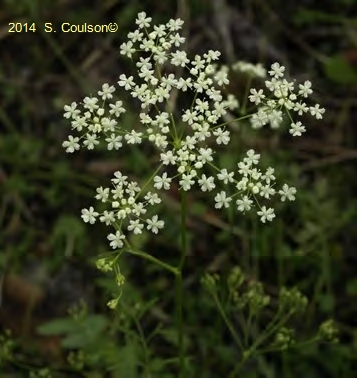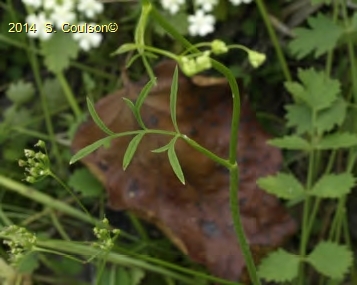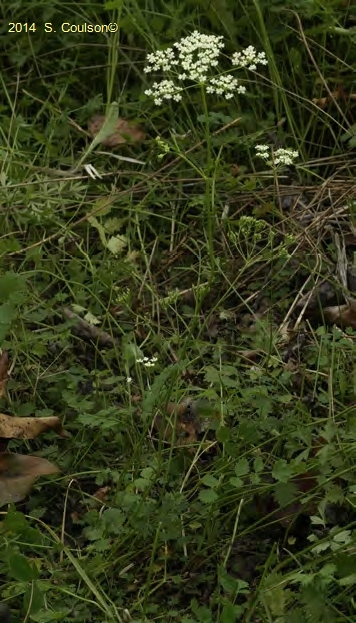User talk:Tony Blake
Burnet-saxifrage
Burnet-saxifrage
Pimpinella saxifraga L.- ANPC Rank –
- Moss, Flora of Alberta – No
- Global Invasive Species Database – No[1]
- NatureServe Rank – ?
- Haber, Upland – ?
- Haber, Wetland – ?
- CWF, Status & Invasive Range – ?
- Alberta Revegetation Guidelines – ?
- The Nature Conservancy – ?
- CBCN – ?
- AB Weed Act– No
Remarks
exerpt from IRIS No. 75 January 2015, The Alberta Native Plant Council Newsletter, by Patsy Cotterill, New weed species for Edmonton: Burnet-saxifrage
Herbaceous perennial, with erect,
sparingly branched, solid stems that
grow 70-100 cm high. Stems are shorthairy
and shallowly ridged and become
glabrous and purplish as they mature.
Some basal leaves are once-divided (once-pinnate) into paired oval, toothed leaflets and a terminal leaflet. Other basal and all cauline leaves are twice divided into narrow segments which give them a more feathery appearance.
Flower clusters are borne terminally in compound umbels, with 12-16 primary rays, each 2-2.5 cm long. The flowers are borne singly in small, dense umbels on pedicels 3-4 mm long, with 12-17 flowers in each secondary umbel. Flowers are white, 2-3 mm in diameter, lack sepals, and have 5 white, rounded petals alternating with 5 white stamens. A divergent, 2-branched style projects from the top of the stylopodium and persists in young fruits. Fruits are round-oval, ca. 2 mm long, glabrous and prominently few-ribbed.
According to the British Flora (Stace 1999)1, the base of the stem is sheathed by a mass of fibres, but in our specimens the remains of the leaf bases appear to be more membranous.
Burnet-saxifrage can be readily confused with caraway, Carum carvi, which is a much more common weed of pastures and waysides in western Canada. However, the basal leaves of caraway are all divided into filiform segments, and the plant is characteristically aromatic. It is biennial rather than perennial.
Burnet-saxifrage, a native of temperate Europe and Asia, occurs in dry grassland and open rocky places, which are often calcareous.
[2]
Link to USDA Plants Profile for Pimpinella saxifraga L.
Burnet-saxifrage
[3]
Link to NatureServe I-Rank info for Pimpinella saxifraga L.
[4]
Link to Invasive Plants of Wisconsin page for Pimpinella saxifraga L.


